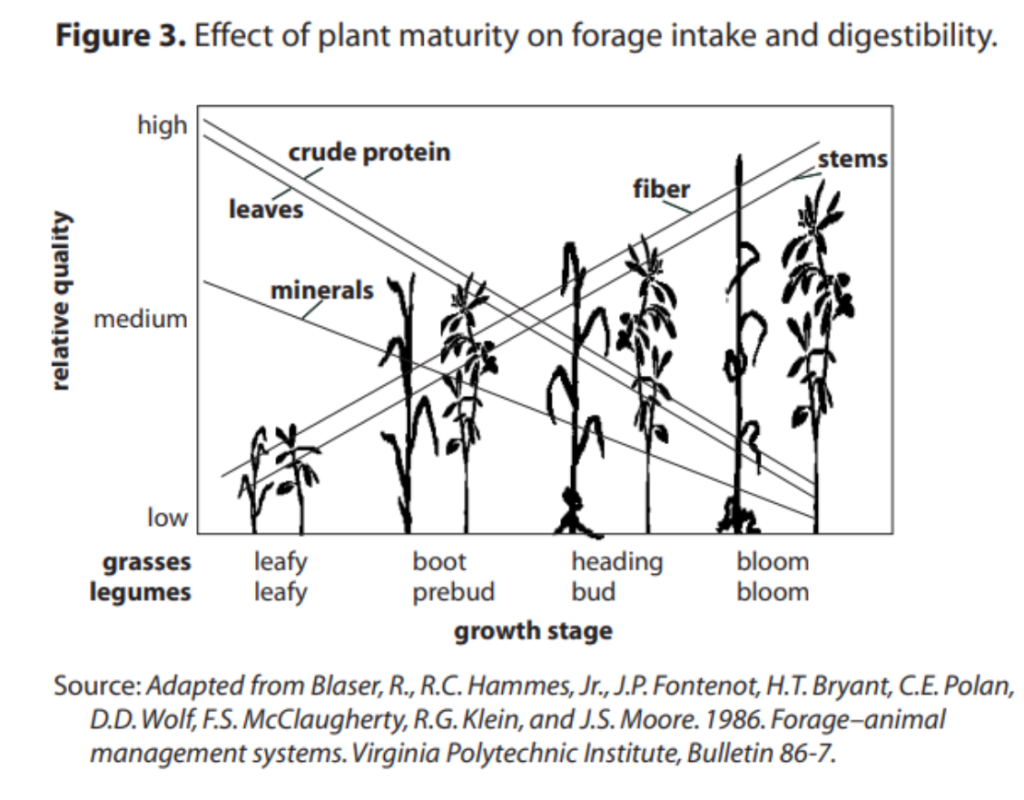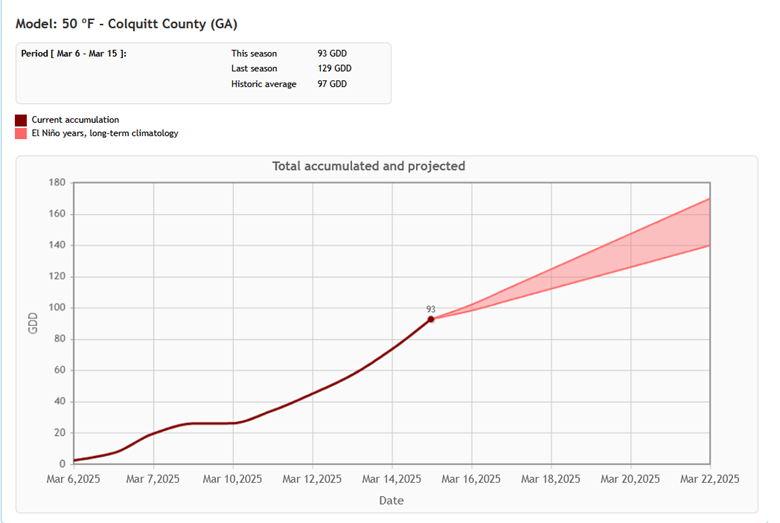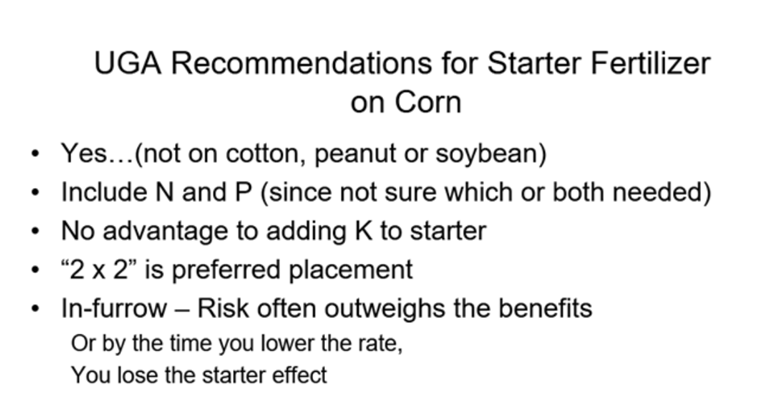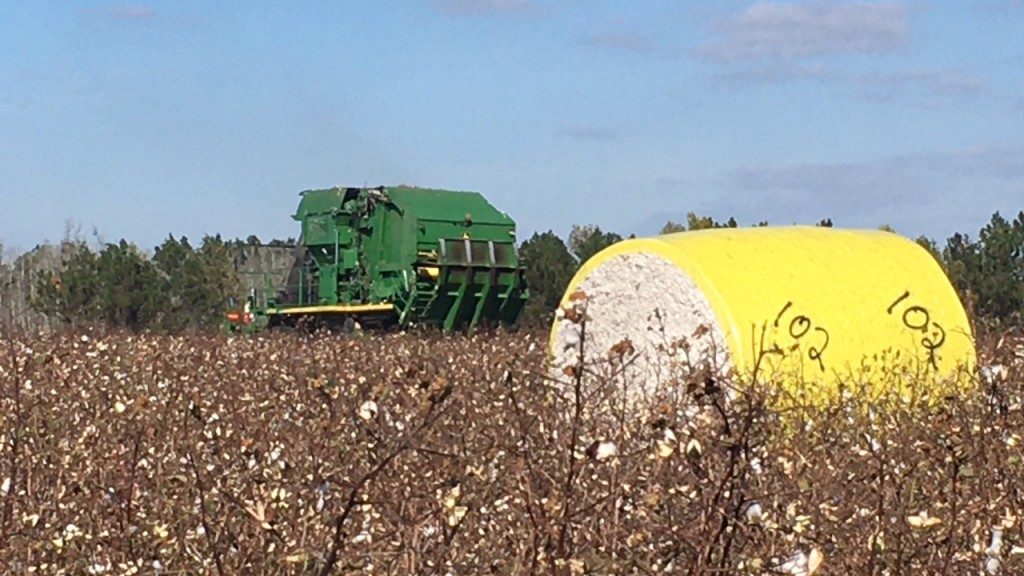The latest drought monitor shows improvement in conditions. The northwest corner of Colquitt County appears to be experiencing some abnormally dry conditions before the weather this past Sunday.

The seven-day weather summary is below for the period of March 9-15. Soil temperatures are reaching the mid-60s. Source: Sunbelt Ag Expo location of the UGA Weather Network.

How does the stage of development of small grains affect forage quality? This is a common question this time of year. If you are reading the reference “Understanding and Improving Forage Quality“ it stages that if the boot-early head stage is missed, take the first harvest at the dough stage for forage quality. The quality of small grains starts to decline rapidly after the boot stage. However, as the grain fills, it adds NFC (starch, in particular), and this partially offsets the decline in quality. Once it gets to the soft dough stage, however, the fiber in the forage becomes far more concentrated and more highly lignified, so it sharply declines thereafter.

What is the plant-back restriction for field corn following an application of 2,4-D?
Plant-back restrictions for field corn after a burndown application of 2,4-D are 7 days (16 oz/A) or 10-14 days (>16 oz/A)
2) If a grower cannot wait to plant field corn in 7-14 days after an application of 2,4-D, what other burndown options are available?
Roundup (glyphosate) or Gramoxone** (paraquat) + Atrazine 4L (32 oz/A) is a good choice.
I had a question or two about GDD for field and sweet corn this past week. Growing degree days (GDDs), also known as accumulated heat units, are used to measure the amount of heat accumulated over time during the growing season. GDDs are calculated by tracking daily temperatures and comparing them to a base temperature. A base temperature is a minimum threshold for successful germination or growth to occur. There is little growth that occurs below a crop’s base temperature.
For both field and sweet corn, the base temperature is 50°F (10°C). Like a base temperature, there is also a maximum temperature threshold for corn, at which growth and development plateaus. This maximum threshold value is 86°F (30°C).
According to Dr. Ted McAvoy, UGA Vegetable Horticulturalist, sweet corn growth begins with the germination stage. Seeds need adequate soil moisture and temperature between 50-95°F (10-35°C) to germinate. Temperatures below 50°F (10°C) can lead to chilling injury in which plant cells are damaged and root growth is aborted, resulting in poor germination or stunted growth. Germination usually takes place within 7 to 10 days after planting, or 70 GDDs, depending on environmental conditions, particularly temperature and soil moisture. Germination and emergence of sweet corn takes 0-140 GDDs.
What about field corn? Generally, a corn seedling will emerge between 90 – 120 GDUs in the early spring. After emergence, a new leaf collar will appear at approximately every 84 GDUs until V10 – V11, at which point the appearance of new collars is accelerated at approximately every 56 GDUs.
The illustration below shows the GGDs from March 6-15, 2025 from the Expo location of UGA Weather Network. The projected GGDs for the next few days is also shown in the illustration. This GGD calculator is from the http://agroclimate.org/ website.

I had a question about sulfur fertilization on corn this past week. It is based off yield goal and consider splitting applications such as at planting and then at sidedress.

What about using pop up on my corn? Small amounts of nitrogen and phosphorus are often used as a starter or “pop-up” fertilizer. The main advantage of starter fertilizer is better early season growth. Corn planted in February, March, or early April is exposed to cool soil temperatures, which may reduce phosphate uptake. Banding a starter fertilizer two inches to the side and two inches below the seed increases the chance of roots penetrating the fertilizer band and taking up needed nitrogen and phosphorus.
Deduct the amount of nitrogen and phosphorus used in a starter fertilizer from the total nitrogen and phosphorus needed for the season. Currently, the most popular starter fertilizer is ammonium polyphosphate (10-34-0). Monoammonium and diammonium phosphates are equally effective. There is generally no advantage in using a complete fertilizer (NPK) as a starter since applying phosphate is the primary objective. There is an advantage to using additional N such as 28-0-0-5, particularly in sandy soils to encourage growth as soils warm. Depending on your needs, a typical popup application is 6 to 7 gallons each of 10-34-0 and 28-0-0-5, as described above.

Cotton: I received a call or two about fiber quality among cotton varieties. Dr. Camp Hand provided this information to county agents not long ago. The yields and grades from the dryland and irrigated Colquitt County locations and the overall average across all locations of the 2024 variety trial program are provided below. Dr. Hand calculated loan value for each location and calculated seed yield for each location to assign a total value to each variety in each location–this year, every little bit counts. The total value considers lint yield, fiber quality, and seed yield as well.



If you have any questions please contact your local county Extension agent.
Have a great week,
Jeremy M. Kichler
Colquitt County Extension Coordinator
The University of Georgia Cooperative Extension does not endorse or guarantee the performance any products mentioned in this update.
